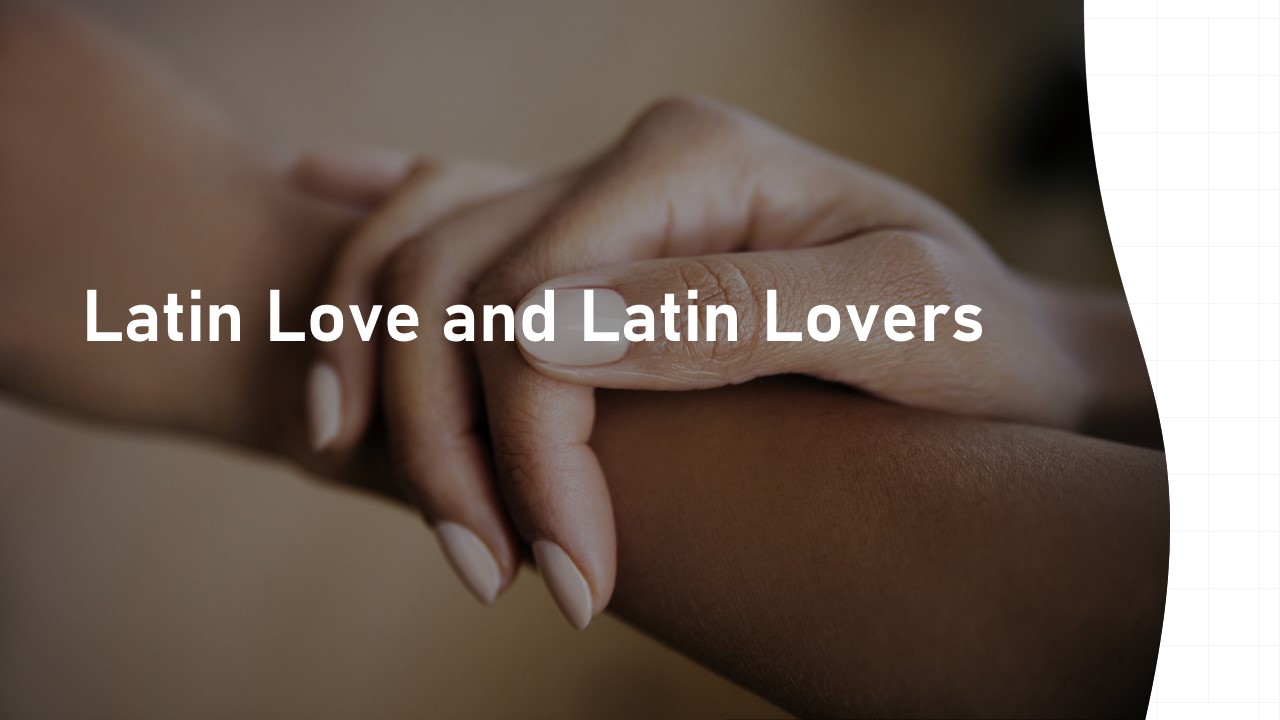The genre of romantic novels has been prolific for recent centuries, not only in Europe but also in the Latin-speaking worlds of Europe and Latin America. The terms “Latin love” and “Latin lover” are commonly associated in the minds of many people.
What Is Latin America?
In public view, Latin love is strongly associated with Latin American and South American countries of the American continent, such as Mexico, Nicaragua, Guatemala, Honduras, and Costa Rica. The term “Latin America” refers to the countries of that region where people predominantly speak Spanish, Portuguese, and French—the languages of Latin linguistic origin. However, the term is widely overlaps with other terms, such as Central America and South America. Many other countries, such as Argentina, Chile, Peru, Colombia, Venezuela, and Brazil, may also be considered, in some sense, Latin American ones.
The character of the Latin lover resembles, in some respects, the “macho man”, but only partially.
What Is a “Latin Lover”?
The cultural stereotype of the Latin lover, however, has another origin. The notion of the “Latin lover” first appeared in the writings of Ancient Rome in its original Latin language. The idea and image changed throughout the centuries as the romantic literary genre evolved over time (Johnson, 2009).
The modern term “Latin Lover” was coined early in the 20th century. It became a label for the Italian-born American actor Rudolph Valentino (1895–1926), who was a popular character in several well-known silent films. He was a sex symbol of the 1920s and became an early pop icon. The modern stereotype of a “Latin lover” portrays a romantic, sensual, and passionate man of Latin or Romance European origin.
Is this also true for Latin America? This may also be accurate when considering popular media imagery portrayed in Argentine tango and Brazilian carnivals. Nevertheless, Michael Schuessler (2014), a professor from the Universidad Autónoma Metropolitana in Mexico City, disagrees with this way of interpretation. He noted,
“this a stereotype promoted by people from the United States. There they see the Latin Lover as someone exotic and attractive. In the US, the figure of the Latin Lover was converted into that of a sex symbol, whereas in Mexico it is the reverse. Here the sex symbol is the blond – we Mexicans have always found them attractive. Moreover, the blonde gringas are seen as the ultimate sexual conquest. And we see this a lot in the novels of José Agustín, Ricardo Garibay, a little in those of Carlos Fuentes, such as Frontera de Cristal, in which bedding a gringa is the maximum sexual conquest that a Mexican macho can aspire to. I think this comes from the way many gringas come to have sexual flings with the beach boys in Acapulco. And of course, the gringos do the same…”
Schuessler (2014).
What Does Love Look Like in Latin America?
Many readers familiar with European literature may recognize Walter Scott and Alessandro Manzoni as classic authors of romantic love novels. In the same way, some of the romantic novels published in Latin American literature from the middle to the end of the 19th century present magnificent examples of the romantic literature genre with unique stories of Latin American love. A particular romance has become the “national novel” in almost every Latin American country (Sommer, 1994).
The 20th century was a good time for modern Latin American romantic love writing to flourish (Faris, 1992; Kenwood, 1992, ed.).
Gabriel García Márquez Is Talking about Love
For example, the Colombian novelist Gabriel García Márquez (1927–2014) is probably the most well-known writer of Latin love internationally. He portrayed the Latin American concept of love vividly and wonderfully. The quotes nicely compiled by Frannie Jackson (2014) from several of his romantic novels vividly illustrate what romantic Latin love is:
1. “It’s enough for me to be sure that you and I exist at this moment.”— One Hundred Years of Solitude
2. “The only regret I will have in dying is if it is not for love.” — Love in the Time of Cholera
3. “Think of love as a state of grace; not the means to anything but the alpha and omega, an end in itself.” — Love in the Time of Cholera
4. “It was the time when they loved each other best, without hurry or excess, when both were most conscious of and grateful for their incredible victories over adversity.” — Love in the Time of Cholera
5. “There is always something left to love.” — One Hundred Years of Solitude
6. “She had never imagined that curiosity was one of the many masks of love.” — Love in the Time of Cholera
7. “Only God knows how much I love you.” — Love in the Time of Cholera
8. “They were so close to each other that they preferred death to separation.” — One Hundred Years of Solitude
9. “There is no greater glory than to die for love.” — Love in the Time of Cholera
10. “The girl raised her eyes to see who was passing by the window, and that casual glance was the beginning of a cataclysm of love that still had not ended half a century later.” — Love in the Time of Cholera
(Jackson, April 19, 2014).
Slim Scholarly Knowledge about Latin Love
Romantic novels are well-known worldwide. However, scholarly studies on romantic love in Latin America are sparsely published in English. Therefore, our current cultural knowledge that international scholars have about love in Latin America is fragmentary, patchy, and piecemeal so far (Karandashev, 2017; 2019). Nonetheless, research interest in the topic of romantic love has been growing among Central and South American scholars in recent decades. Therefore, we’ll learn more about what Latin love is in the coming years.
